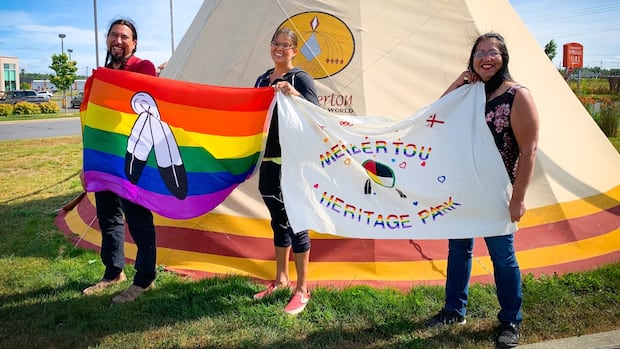#MembertouFirstNation connects with #Pride #CapeBreton on deeper level
'As traditional people we know how it feels to go underground and have our ceremonies hidden,' says Jeff Ward
CBC · Posted: Aug 09, 2019
"As #PrideCapeBreton winds down, some people on the #Membertou First Nation say the community's large presence in the festivities is a natural fit.
"This year, Membertou hosted the popular #DragQueenBingo event, the Membertou pedway was lit up in Pride colours, the flags at the #MembertouHeritagePark were swapped for #LGBTQ flags and there was a Membertou float in the #PrideParade.
"Jeff Ward, manager of the heritage park, said participating in Pride events is something the community connects with.
"' 'As traditional people, we know how it feels to go underground and have our ceremonies hidden,' he said, pointing to how revisions in the Indian Act in 1951 removed a ban on ceremonies.
A personal connection
"Andrea Dennis works at the heritage park. She said staff secured #TwoSpirit flags for the first time and people have been snapping them up.
"Two-spirit is a term sometimes used by #IndigenousPeople to describe #gay, #lesbian, #transgender or #NonBinary people. The flag has two feathers on top of the traditional rainbow pattern.
"Dennis said her brother, who is dead, was two-spirit. She said when he first came out, he was harassed. Her brother moved to Toronto, but he was still harassed.
"She believes things have changed for the better.
" 'His spirit is still alive in me,' said Dennis. 'Even going to a Pride parade reminds me of him, it's like he's still there.' "
Read more:
https://www.cbc.ca/news/canada/nova-scotia/pride-cape-breton-membertou-1.5241873
#IndigenousPeoples #IndigenousPeoplesDay #CapeBretonNS #FirstNations #LGTBQRights #IndigenousRights #LGBTQNativeAmericans #HumanRights
